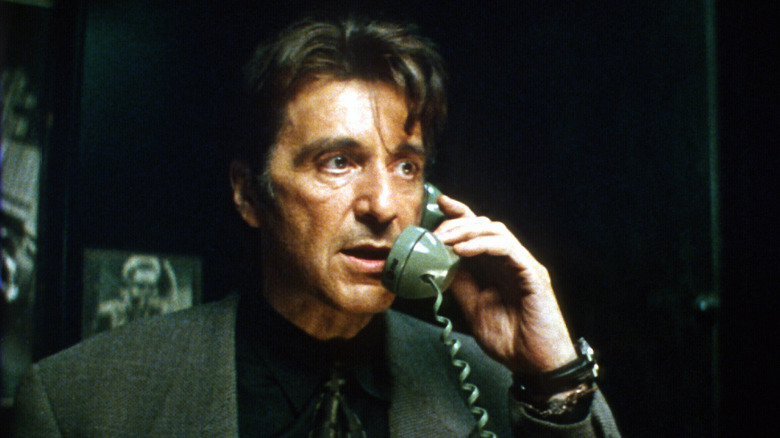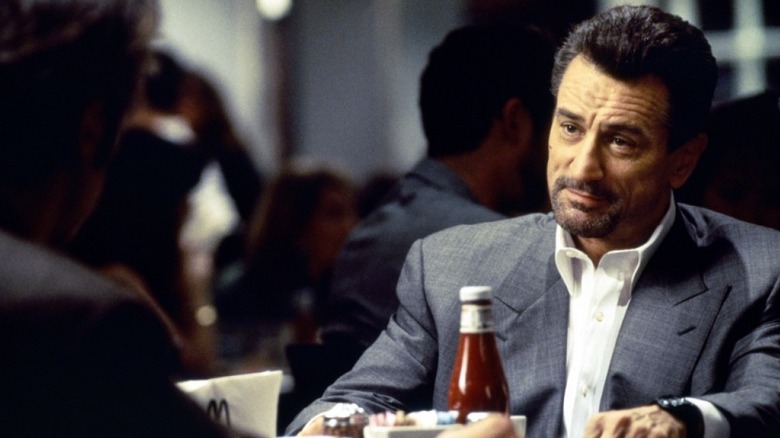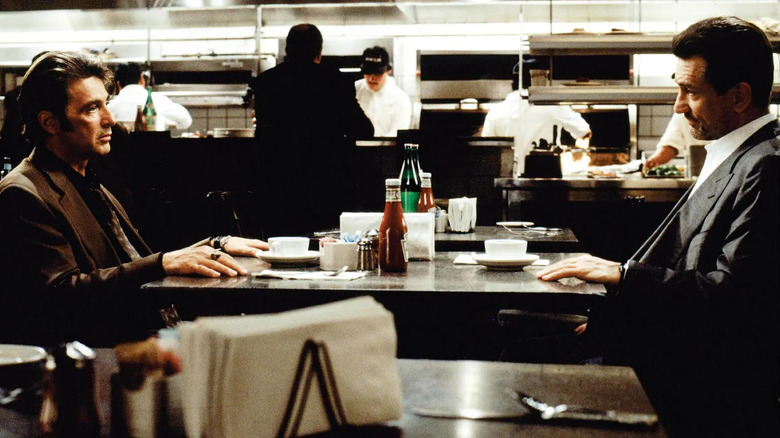Michael Mann Made Heat With Two Ambitious Goals In Mind
In Michael Mann's 1995 crime drama, "Heat," an excellent ensemble cast is headlined by a clash of the acting titans between Robert De Niro and Al Pacino. Somehow, it was the first time the two had shared the screen together, and Mann provided them with a script rich and deep enough that it met expectations.
Even though I already just referred to "Heat" as a crime drama in the first sentence of this article, Mann has said in an interview that he does not see "Heat" as a genre movie at all. To Mann, the film is "a highly structured, realistic, symphonic drama," one with layers and layers of character and relationships.
This is part of what Mann set out to do when he made the movie, according to a 2017 interview with LA Weekly. In the interview, Mann explains the two goals he had in making the film:
"I didn't set out to do a genre piece that would conform to a set type. It's not a cops-and-robbers film. To me, it's human drama, period. And it's a very ambitious film, but in its ambition it was to be two things. One was kind of a counterpoint: Could I pull off a very contrapuntal film in which there are really only two protagonists? The second was that I wanted to dimensionalize everybody — that everybody should have a life."
Characters with inner lives
With those goals in mind, Mann went to work filling his movie with depth. He did an excellent job humanizing each of his characters, no matter how minor they may seem. Nobody came into the film feeling like they were just there to move the plot in a certain way and then disappear out of existence. Everybody felt like they had a rich inner life. Every detail in the movie seemed intentional, especially in cases like the details of De Niro's house, which reflects his character's psyche in many subtle ways.
This philosophy was most evident in the film's two main characters, Pacino's Vincent Hanna and De Niro's Neil McCauley. Mann talks about this in the LA Weekly interview, saying:
"In the case of the two protagonists, Hanna and Neil McCauley, I separated them out because each is an engine that drives the thesis and the antithesis into the ending. I decided that only those two would be totally self-aware. That's why they have a unique rapport. And the ambition behind this was: Can I have a drama in which, at the same time, we're 100 percent invested in Neil McCauley getting away, and we're also 100 percent invested in Hanna's intercepting him? We don't want the interception to occur, and yet we're thrilled about the potential of it occurring, all at the same time."
By creating a web of characters with so much depth, it makes sense that the audience would be unable to decide who to root for. There is no clear protagonist because, like in real life, morality isn't black and white.
Not just archetypes
Michael Mann wrote the original script for "Heat" back in 1979, more than 15 years before the film would come to fruition, which makes sense when you consider the rich depth of character and story. As Mann said in an interview, "It took me a long time to get right."
But Mann didn't just want to write a stereotypical cop movie. In another 2017 interview with Vulture, Mann spoke about how he needs to believe in characters in order to make a movie. "I'm really not interested in archetypes," Mann said. "In my research, I met a lot of people who do what my characters are going to do. And, the dimensionality is always stunning, it's always fascinating, it defines who they are ... I believe them as people and that allows me, as a writer/director, to access them with more intensity."
Mann taking his time with writing the script, as well as keeping all of these goals and philosophies in mind, is why the movie is as good as it is. He takes a group of some of the best actors of their time and gives them roles that allow them to showcase the whole of their abilities.
In the end, I think he accomplishes his goals. He creates two characters that are completely self-aware yet diametrically opposed and gives them a world full of depth in which to do battle. It brings to mind a beautiful Renaissance painting, where every brushstroke and background character is intentional. And the two main subjects of the painting, Pacino and De Niro, are able to shine.


